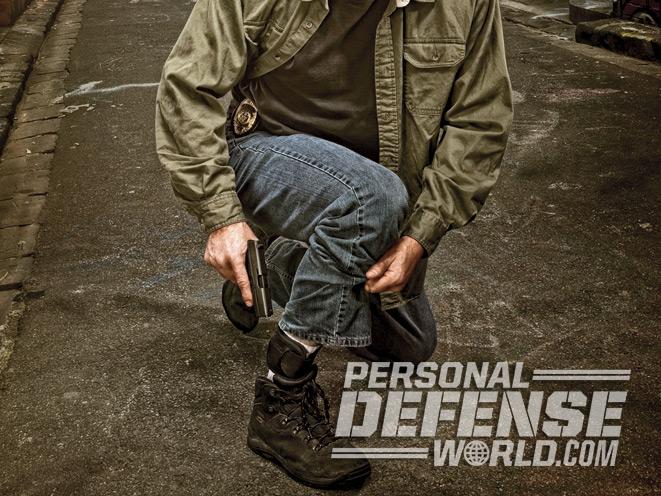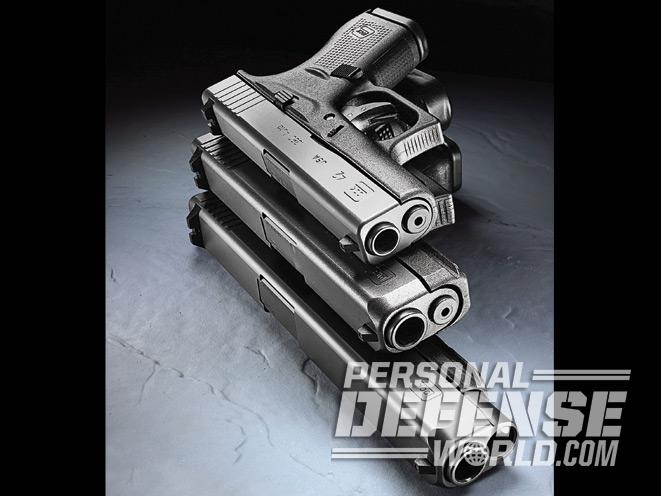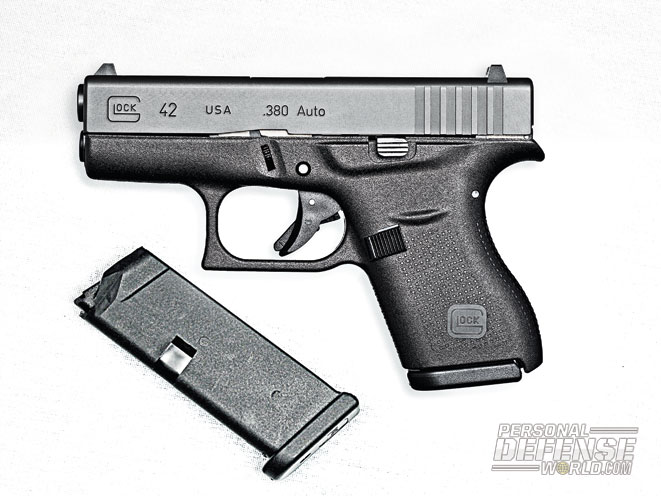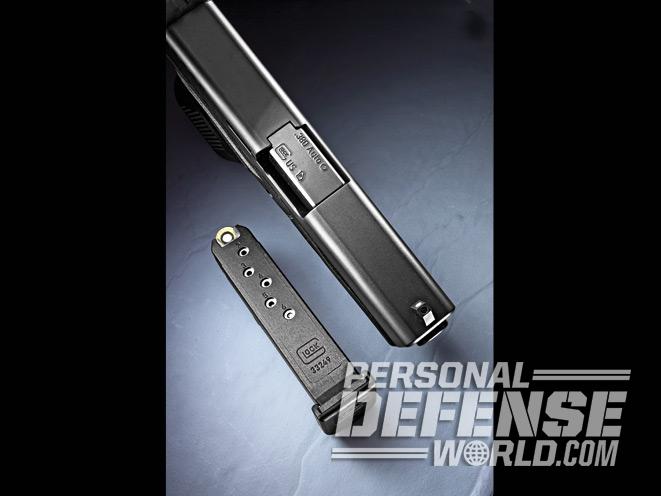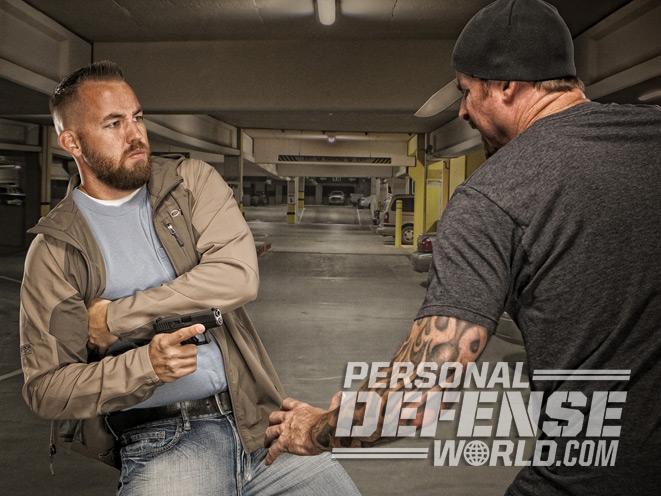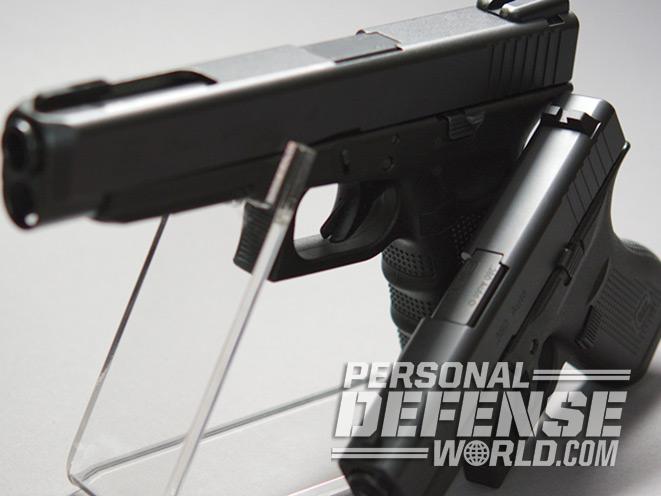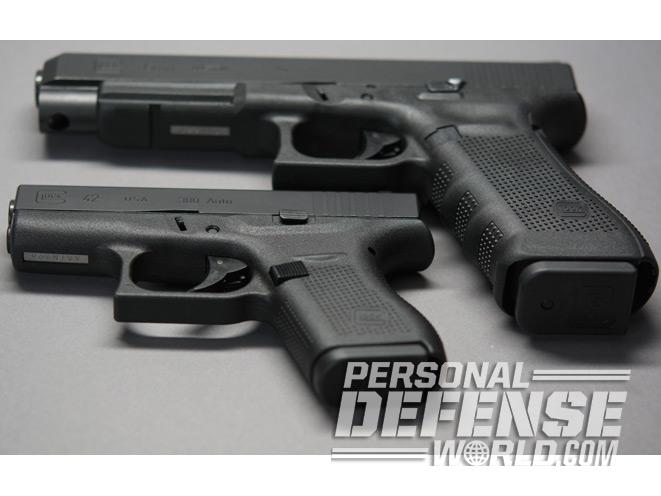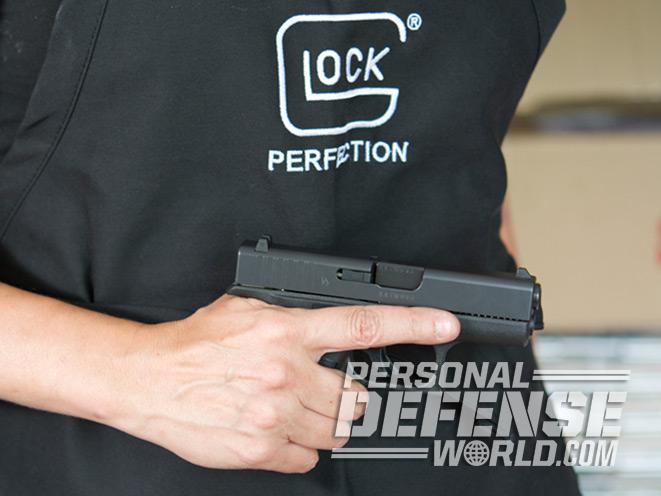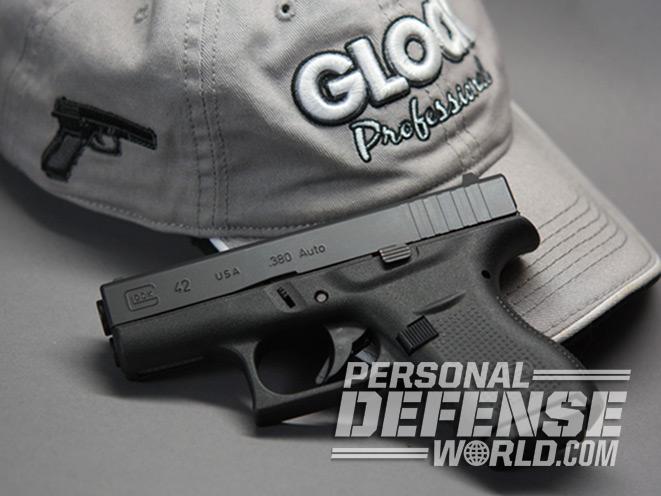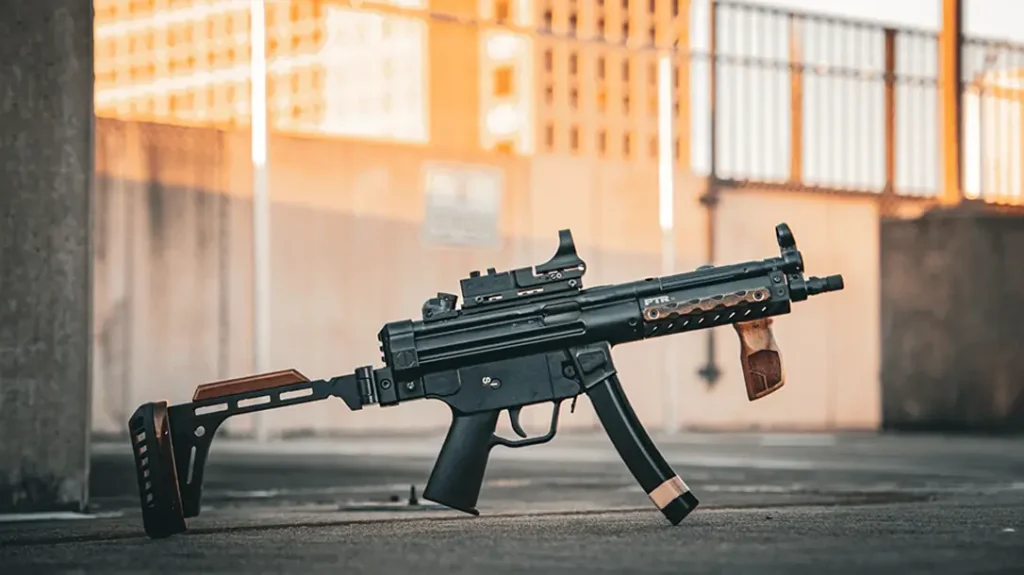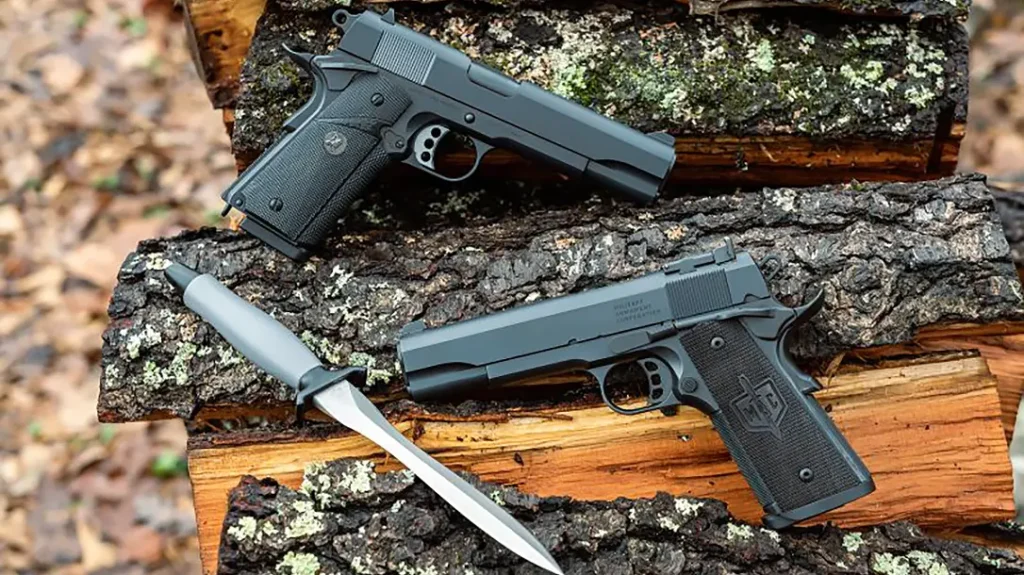GLOCK fans have long awaited the development of a single-stack version of the Austrian autopistol that is small enough to conceal yet simultaneously comfortable enough to shoot accurately. I’ve had a long-term relationship with my GLOCK 35, which I carried for over a decade, and the addition of the GLOCK 42 has at last made my GLOCK family complete!
My inability to carry a backup firearm on duty as a law enforcement officer began to negatively impact me after experiencing an epiphany during a SWAT training event. During a scenario-based training event focusing on weapon retention, I was blindfolded until a 260-pound role-player forcibly knocked me onto my back. The “assailant” straddled me and attempted to pull my Glock 35 from my holster. I rolled over to my strong side in an attempt to protect my firearm in the holster. I fought to get out from under the role-player who, incidentally, was wearing a padded suit. I delivered a series of knee and elbow strikes, which were absorbed by the protective suit. My inability to deliver substantial blows to my aggressor caused me to experience exhaustion. This led to a loss of visual acuity and perceptual narrowing (tunnel vision). Suddenly, I realized that even though I wanted to draw my firearm, I was unable to swivel the holster’s hood and disable its retention device. This was a scary moment for me. In order to end the scenario, I kicked the role-player in the face as hard as I could. It was a cheap shot, but losing is never an acceptable option. I was able to disorient the role-player, create distance and draw my Glock 35. I realized that if I ever found myself in a situation where I was outweighed, out-skilled, overpowered and in a disadvantaged position, I may not be able to retrieve my primary gun.

After this experience I was no longer indifferent toward carrying a backup gun, but was constrained by my department’s policy. Unable to carry even the smallest authorized firearm, the Glock 27, concealed, I was precluded from carrying a concealed firearm. Fortunately, my department’s policy regarding carrying concealed firearms off-duty was changed in recent years and became more sensible and relaxed than the backup firearm policy, which still exists. So, long before my state passed a law permitting concealed carry, I was able to legally carry a concealed firearm while off-duty. I soon recognized the challenge of finding a concealable and dependable firearm that was comfortable to shoot and that I was likely to carry. Before I found a firearm that met these criteria, I rarely carried concealed, even though legally and technically I could have and should have. It was just too inconvenient.
Advertisement — Continue Reading Below
Top CCW Choice
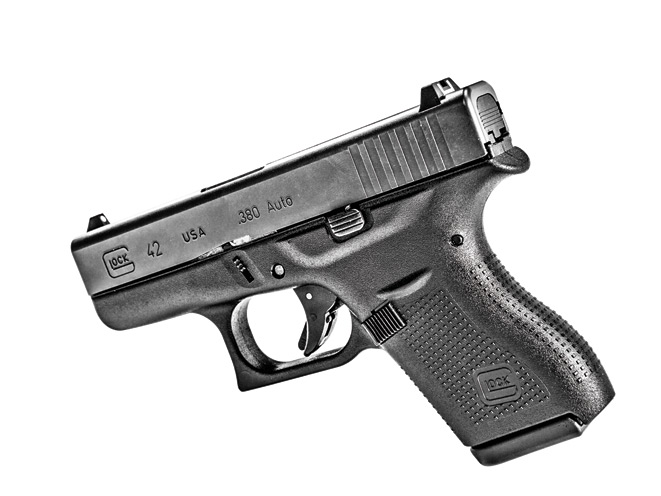
The GLOCK 42 overcomes the obstacles that many face when attempting to choose a firearm to carry concealed. The GLOCK 42 can be concealed easily, is accurate and comfortable to shoot, remains dependable under adverse conditions, is affordable, simple to operate and easy to maintain. In other words, the GLOCK 42 has all of the characteristics required in a concealed-carry firearm.
RELATED: Massad Ayoob – You Got A GLOCK. Now What?
Advertisement — Continue Reading Below
Without a doubt, the most important factor that makes a firearm suitable to carry concealed is that it can actually be concealed. Just like my department’s policy requires backup guns to be concealed, state concealed-carry laws also mandate concealment. The only difference is that state laws allow more latitude for caliber and manufacturer selection. The fact is, when it comes to carrying a concealed firearm, size really matters!
The smaller the firearm, the easier it is to conceal. Unfortunately, shrinking the size of the firearm can also make shooting it uncomfortable, maybe even downright painful. If a shooter associates pain with each pull of the trigger, it becomes natural to avoid the pain stimulus or develop some sort of bad habit to cope with the discomfort. Balancing the caliber with the size of the firearm is a challenge for any firearm manufacturer. After shooting the Glock 42, I can attest that GLOCK got it right. The Glock 42’s trigger is 5.5 pounds, which is slightly heavier than my Glock 35’s 4.5-pound trigger.
Training Essentials
Advertisement — Continue Reading Below
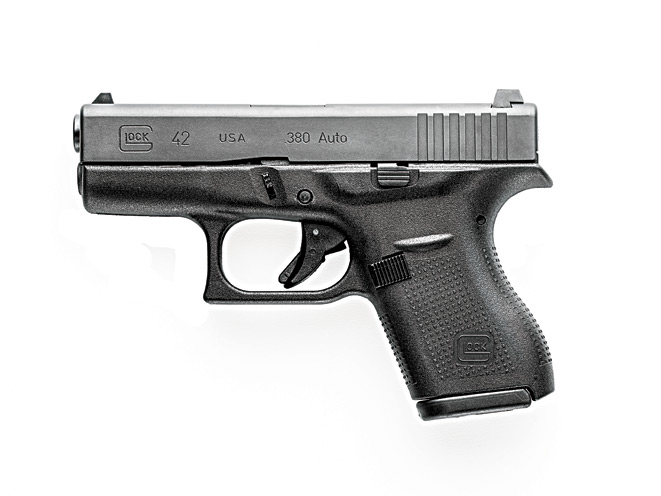
Some may argue that a firearm’s caliber should be the most important consideration in a personal-defense firearm. Those who push this point usually feel that any caliber below 9×19 is inappropriate for personal defense. I would argue that so long as the user is trained to understand their capabilities and limitations—and those of the firearm and ammunition they are carrying—they will better comprehend the appropriate situations for its use.
RELATED: Deon Martin – A Big-Bore GLOCK Shooter
Developing a concealed carry firearm that meets the needs of individuals of every size is a challenge. GLOCK has responded to the demands of its loyal fans by developing and delivering the Glock 42, a single-stack .380 AUTO that retains the majority of the characteristics of other GLOCK pistols. Without a doubt, keeping true to the GLOCK design will allow this model to continue the historically high standards of reliability associated with GLOCK pistols. As a retired police training sergeant and a civilian, I know that the Glock 42 will increase the likelihood of new shooters choosing to carry a concealed firearm. Once this firearm gets into the hands of those who have struggled to find the “right” concealed-carry firearm, it will be love at first shot.
Advertisement — Continue Reading Below
